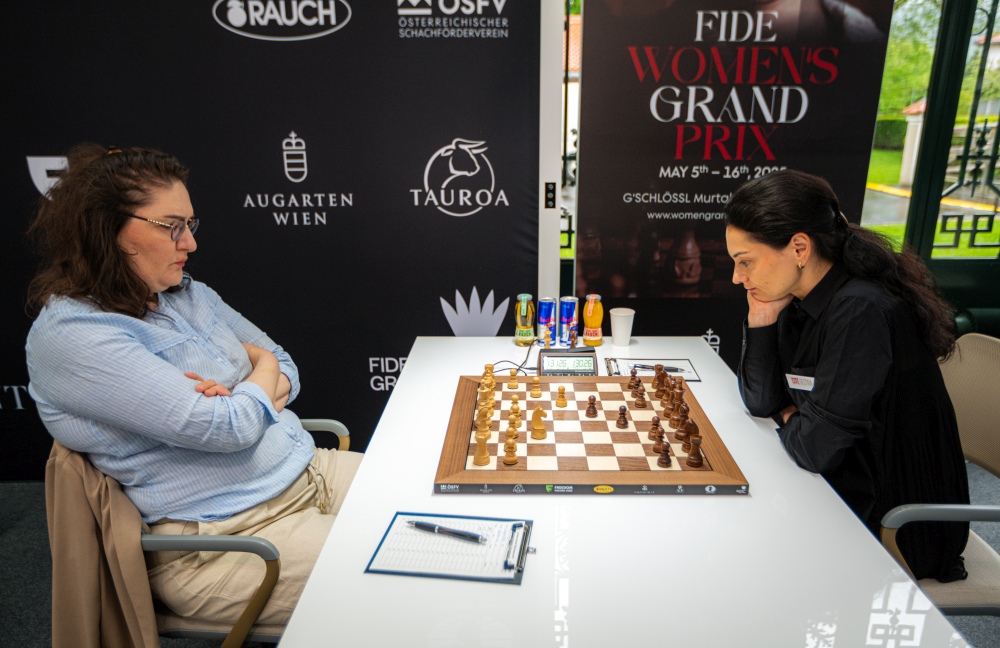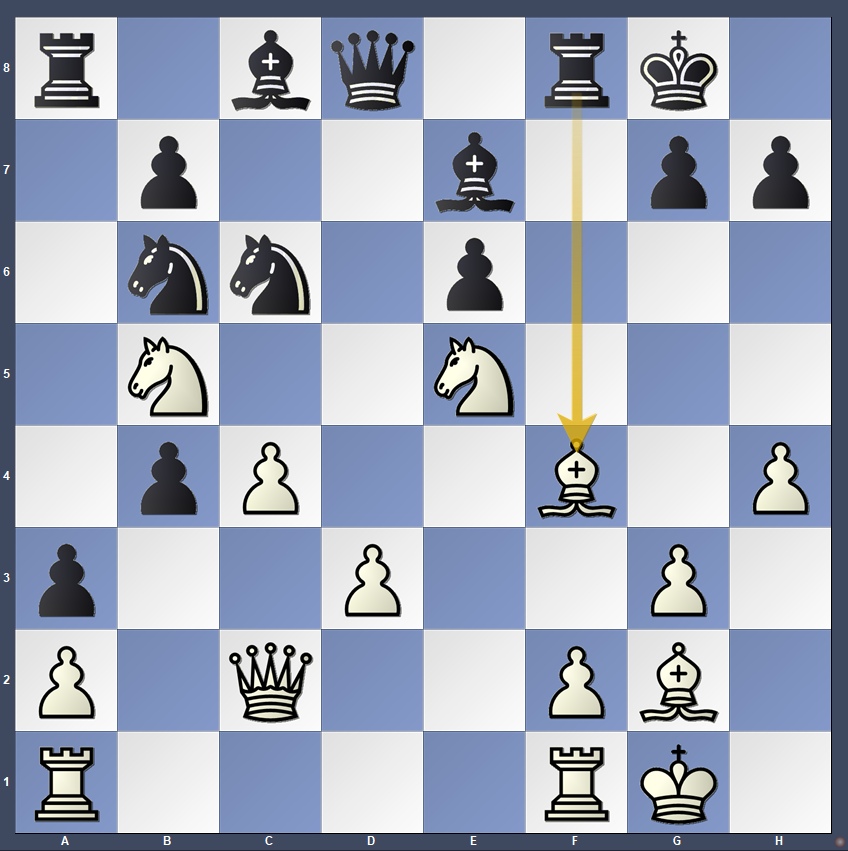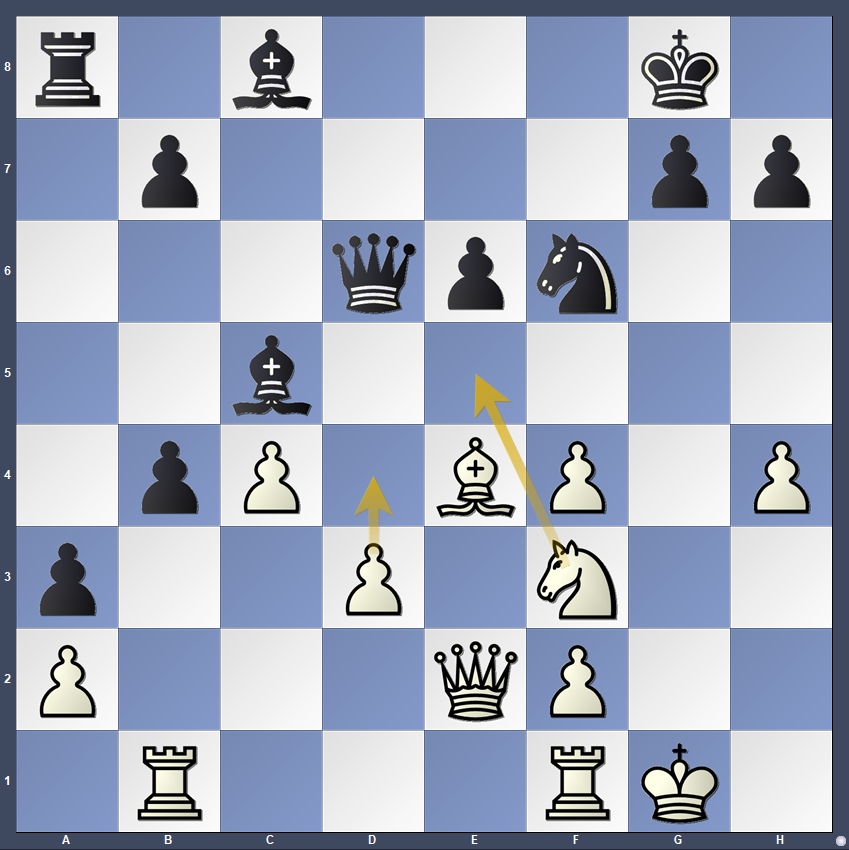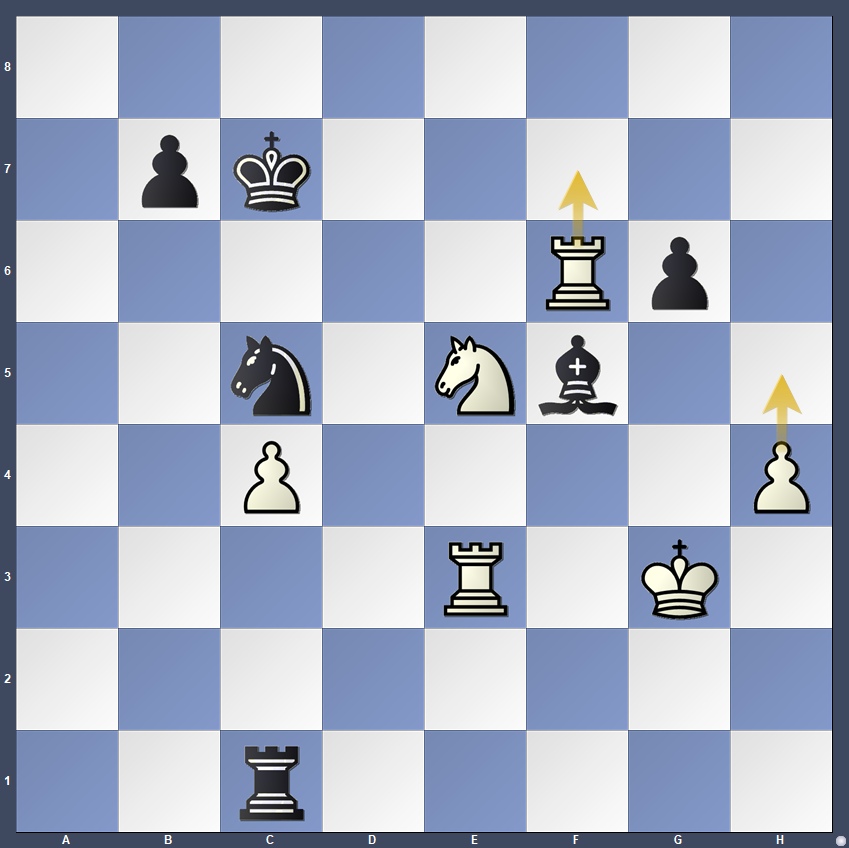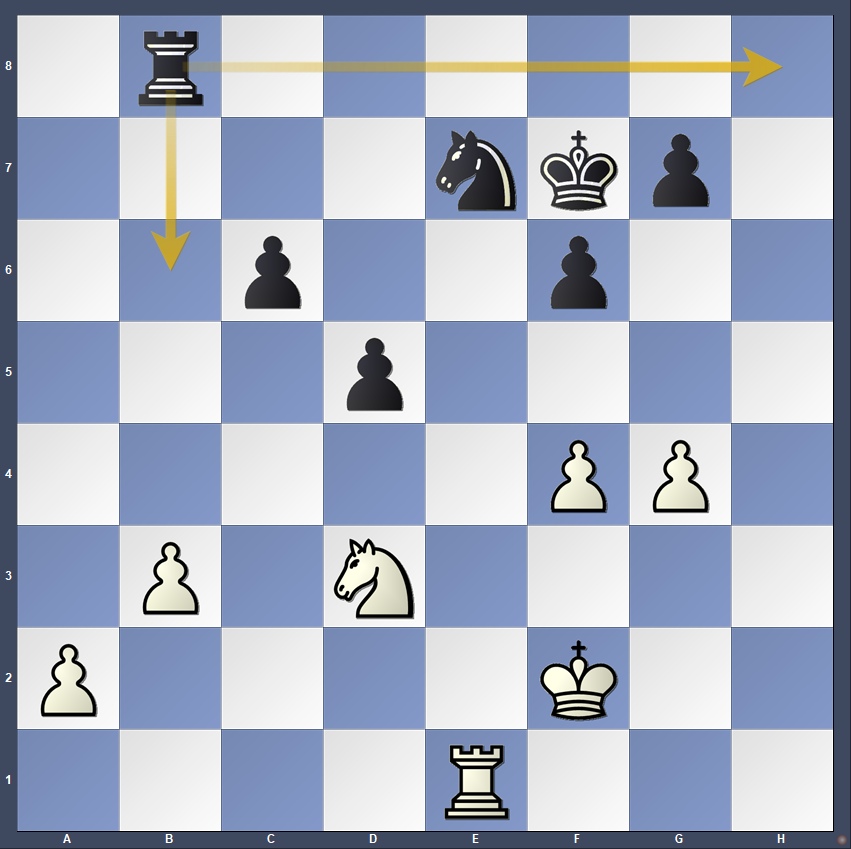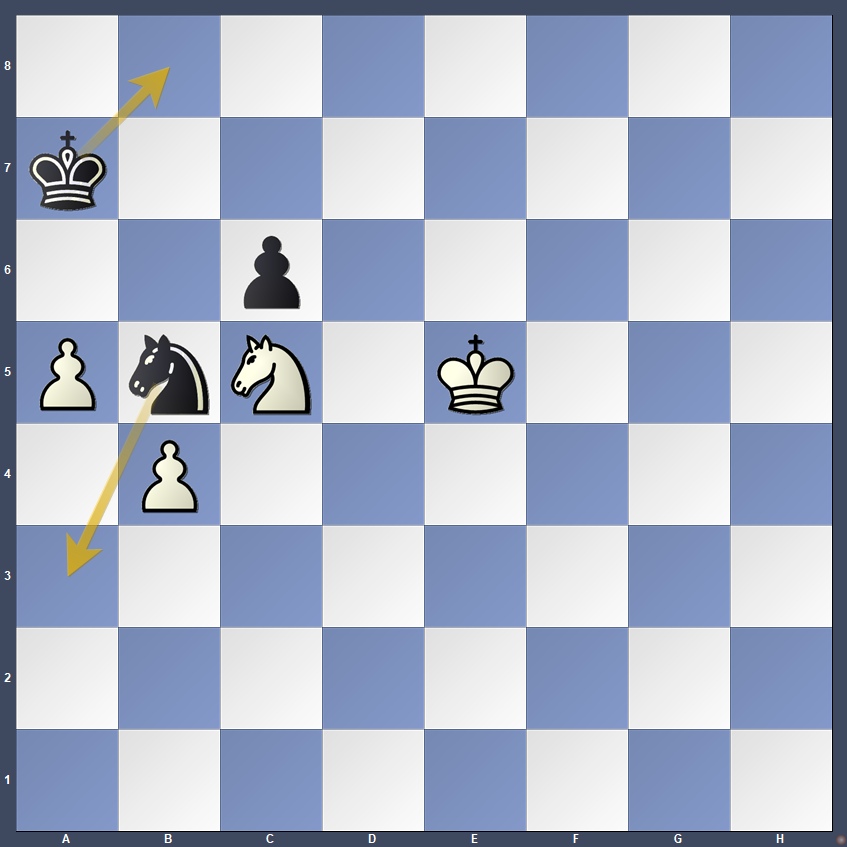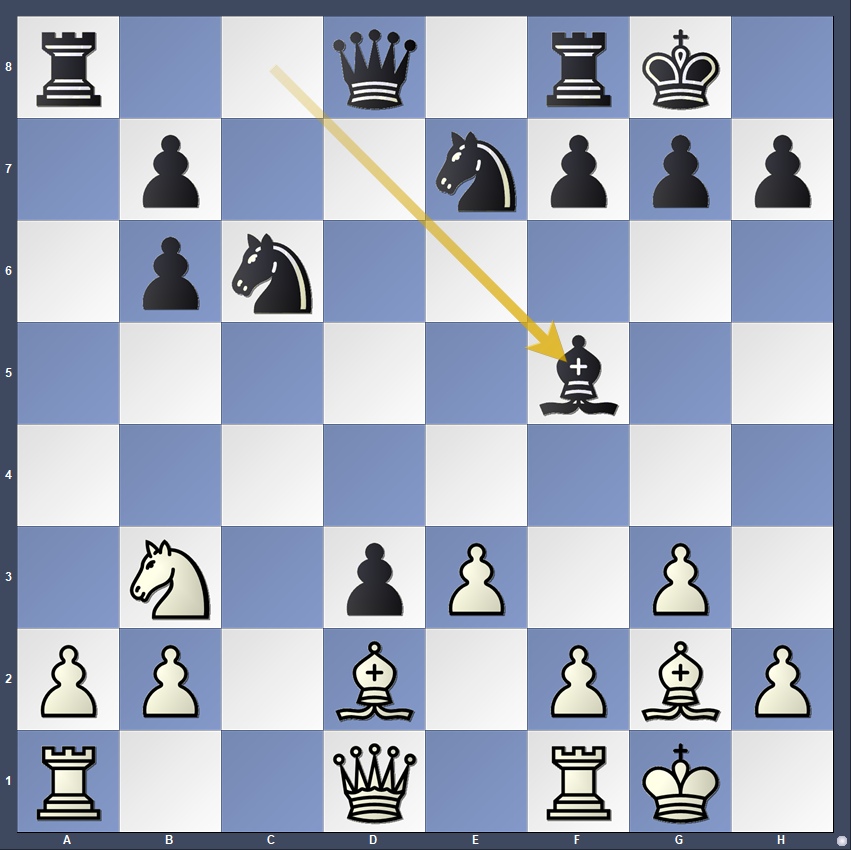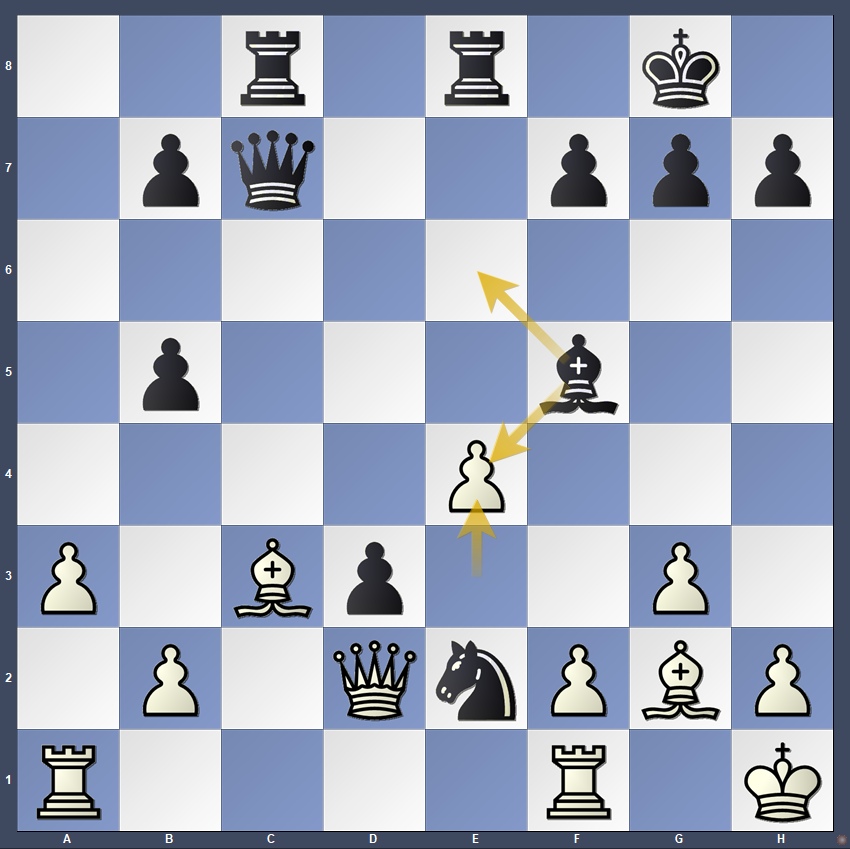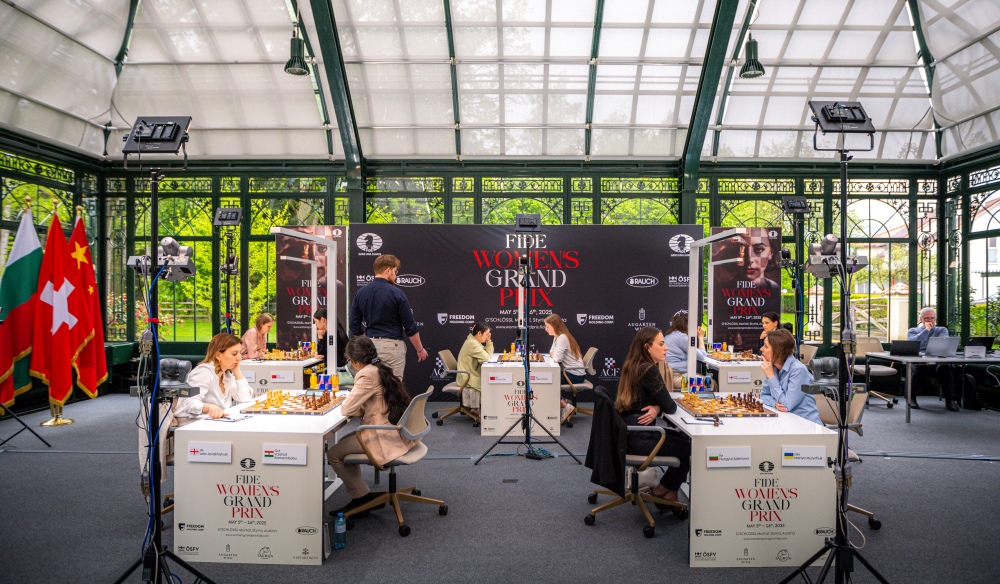
Playing with black pieces, Indian superstar Vaishali Ramesbabu defeated Lela Javakhishvili. Tan Zhongyi staged a second straight comeback, defeating Olga Badelka. In a direct clash between two top contestants, Anna Muzychuk defeated Zhu Jiner and is now in sole third place, on 1.5 points.
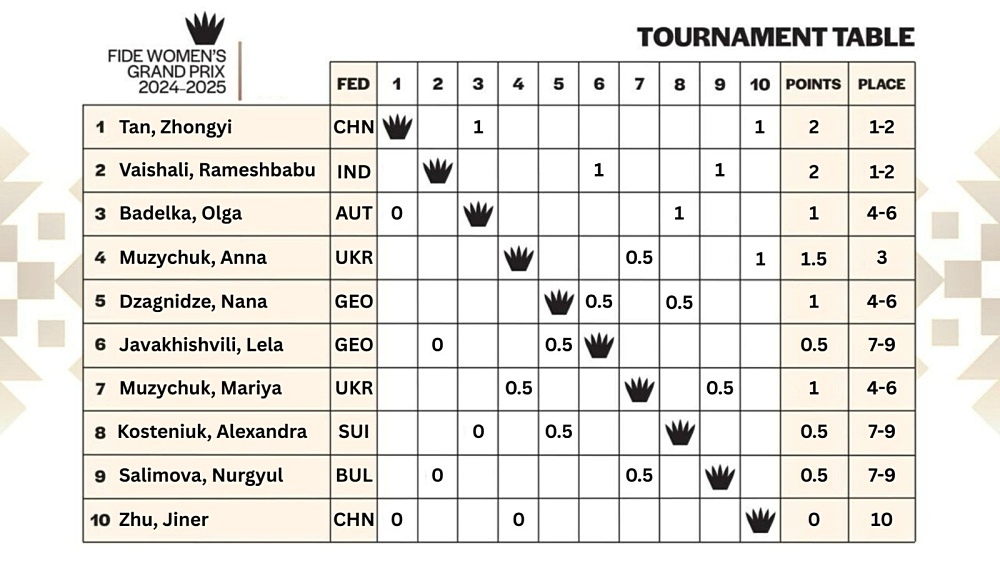
Round two of the final leg of the 2024/2025 FIDE Women’s Grand Prix (WGP) again saw sudden swings across the boards.
Vaishali Rameshbabu delivered the round’s steadiest performance, keeping a strong grip on the game after surprising Javakhishvili with a Reverse Grunfeld. Vaishali steadily increased her pressure on White. Despite putting up stiff resistance, Javakhishvili finally broke and surrendered after 39 moves.
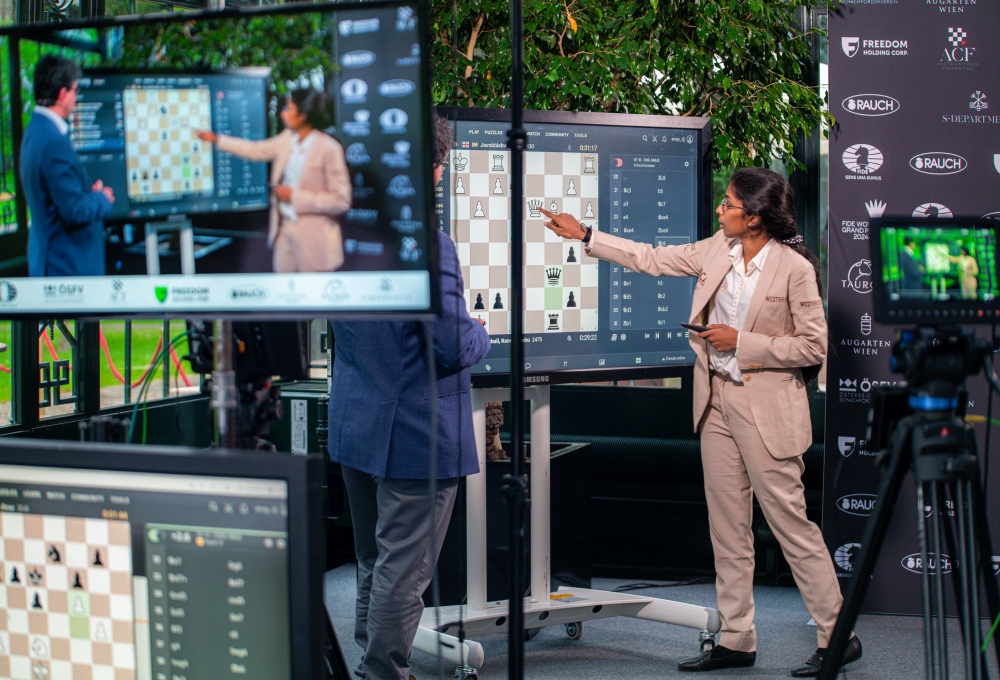
In the second decisive game of the day, Tan Zhongyi had a lucky break against the young Austrian representative, Olga Badelka. Despite playing with the white pieces, the former Women’s World Champion erred early on in the game and exposed herself to a devastating attack. Luckily for her, Badelka hesitated at the critical moment. Despite being low on time, Tan managed to turn the tables on Badelka and emerge victorious. It’s the second game in a row (after defeating compatriot Zhu Jiner in round one) that Tan managed to make a comeback from an inferiour position.
The longest game of the day, lasting five hours, was played between Anna Muzychuk and Zhu Jiner. This was an early duel between the top two contestants in the event, who have a chance to win the tournament and the overall Grand Prix. Zhu surprised Muzychuk in the Ruy Lopez but faltered in the middlegame. Despite mutual inaccuracies, Muzychuk capitalised on a late mistake to win a key game. The Ukrainian is now in third place with 1.5 points, while Zhu is in sole last, as the only player with no points after two rounds.
It was another frustrating round for Dzagnidze, who, as in round one, built up pressure before squandering it. In the English Opening, Nana (playing as White) gained an advantage, and then misplayed and threw it all away. Kosteniuk also had her chances, but – like Nana – also threw them out of the window. Nana is now on one point, while Kosteniuk is on half.
Mariya Muzychuk held a slight edge against Nurgyul Salimova on the black side of the Sicilian Rossolimo but chose not to press in the opponent’s time trouble, settling for a draw.
Here’s a closer look at the round-two games:
Nana Dzagnidze – Alexandra Kosteniuk, ½-½
Following a shocking loss on the opening day of the tournament, former Women’s World Champion Alexandra Kosteniuk faced Nana Dzagnidze. In the English Opening, Dzagnidze handled the position with greater accuracy and soon held a slight edge. As the game went on, she took full control of the center and gained dangerous initiative.
White’s pieces were more coordinated and active. Black needed counterplay and found it in an exchange sacrifice, although it did not offer sufficient compensation.
20…Rxf4 21.gxf4 Nd4 22.Nxd4 Qxd4 23.Be4 – the first imprecision by White. 23.Rae1 was better.
To make things even worse, few moves down the road Dzagnidze made an error and gave up her advantage.
27.d4?? Entering a sequence after which Black got dangerous counterplay.
27…Qxf4 28.Bxh7 Nxh7 29.dxc5 Qg4! Now Black is asking questions around the white king and will soon activate her c8 bishop, posing serious threats.
Nana defended herself the only way she could. Soon, the queens were off the board and the position was even. But Kosteniuk started to err again, allowing Dzagnidze a second chance – which the Georgian took.
Move by move, Dzagnidze’s position improved—until she stood on the verge of victory. But now Nana returned the favour and let it slip:
Nana should have proceeded with 66.Rf7+ Kd6 67.h5. Instead, she first pushed the h-pawn 66.h5??, throwing a lifeline to Kosteniuk.
67…Ne4+! The point is that after 68.Rxe4 Bxe4 69.hxg6 Rg1+ 70.Kf4 Bxg6! White wins a piece but Black trades the rooks and is right on time to eliminate White’s last pawn – 69…Bxg6 70.Rxg6 Rxg6 71.Nxg6 b5 72.cxb5 Kb6.
Neither player was happy with the way they played this game.
Tan Zhongyi – Olga Badelka, 1-0
This was a clash between two winners from day one. Former World Champion Tan was up against Austria’s Olga Badelka who made a comeback on day one against Alexandra Kosteniuk.
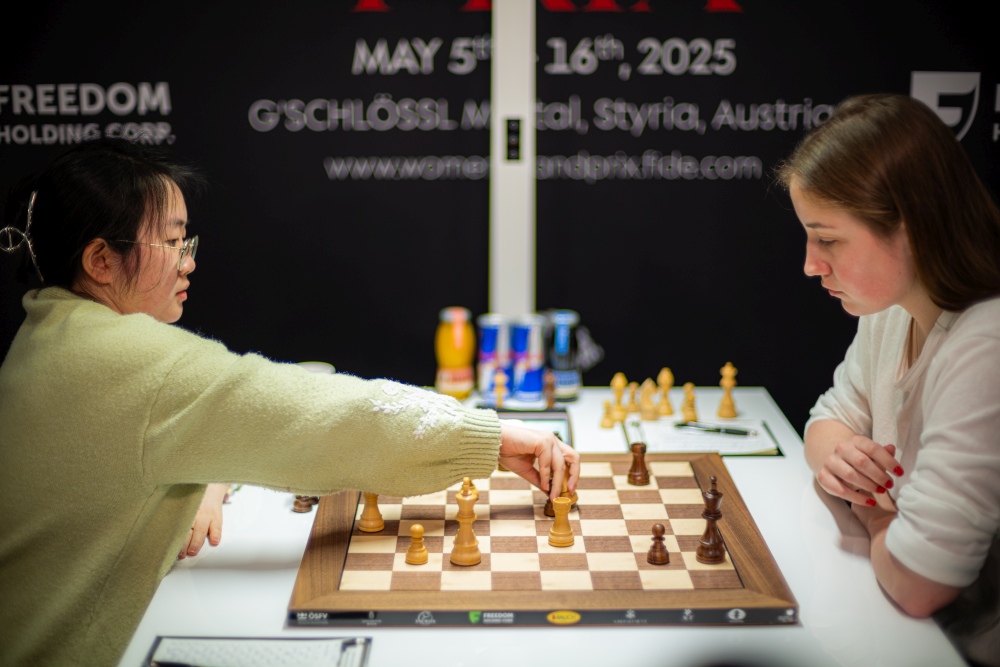
There was psychological play from move one, as both sides spent a long time thinking how to respond to lines which they were surely prepared for.
In the French Defence, both sides played reasonably well until the following position:
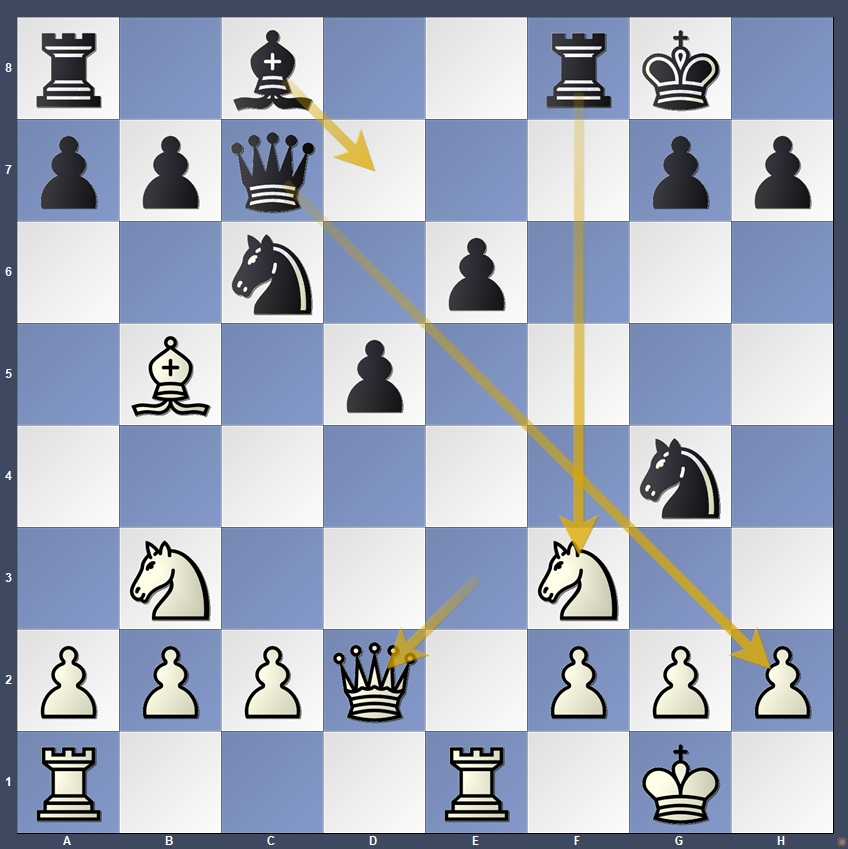
After five minutes of thinking Tan blundered with 15.Qd2??
White was now lost after 15…Rxf3! (a common motif in this position) 16.gxf3 Qxh2+ 17.Kf1 Nce5. However, Badelka missed this golden opportunity and opted for the insipid 15…Bd7?
Tan sank into deep thought, spending 21 minutes before playing 16.h3. Badelka now took on f3: 16…Rxf3 17.hxg4 Rf4, but it was not nearly as strong as on the previous move.
In subsequent play, the evaluation changed several times as the opponents traded inaccuracies and eventually reached the last critical position of the game.
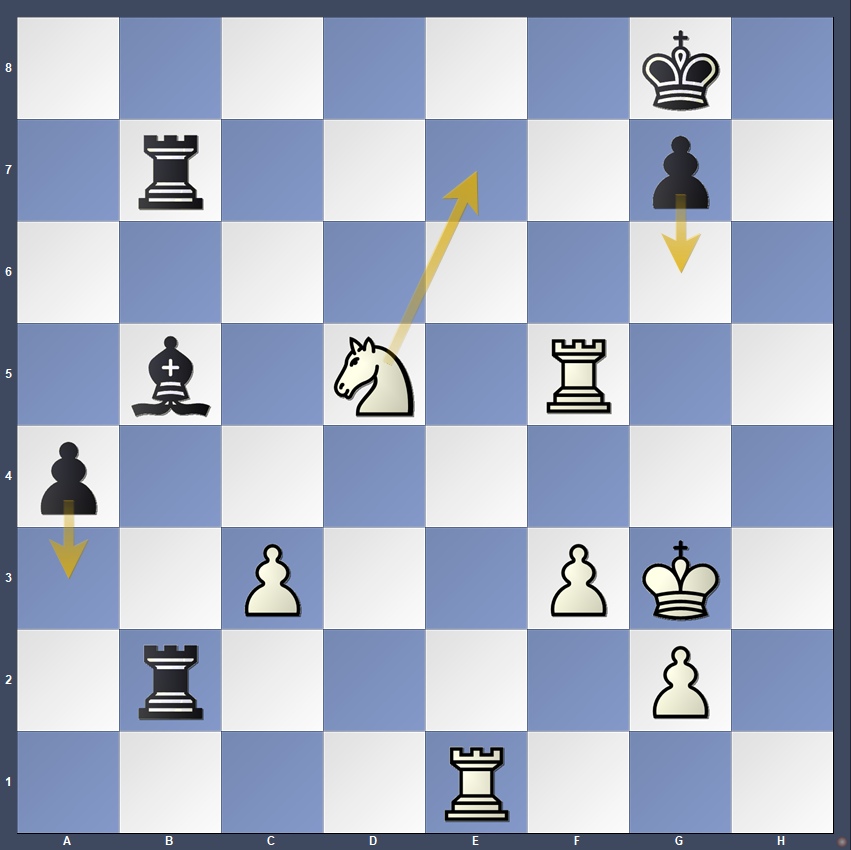
Tan won a pawn and reactivated her pieces. Badelka was now under pressure. She paused again — and then made a catastrophic blunder. Instead of going for a secure line with 38…g6 39.Rf4 a3 40.c4 g5, Badelka made a fatal error: 38…a3?? overlooking the threat of mate.
After 39.Ne7+ Black had to give up an exchange to avoid being mated on the h-file (39…Kh8/h7 40.Rh5#) 39…Rxe7 40.Rxe7. Tan reached the first time control and smoothly converted her material advantage 16 moves later.
Anna Muzychuk – Zhu Jiner, 1-0
This was the heavyweight clash of the round. Two favourites for the event and the Grand Prix title squared off in round two. Unlike Anna Muzychuk, who had an easy first day with a quick draw against her sister, Zhu lost her game in round one after defending a very weak position against Tan for more than five and a half hours.
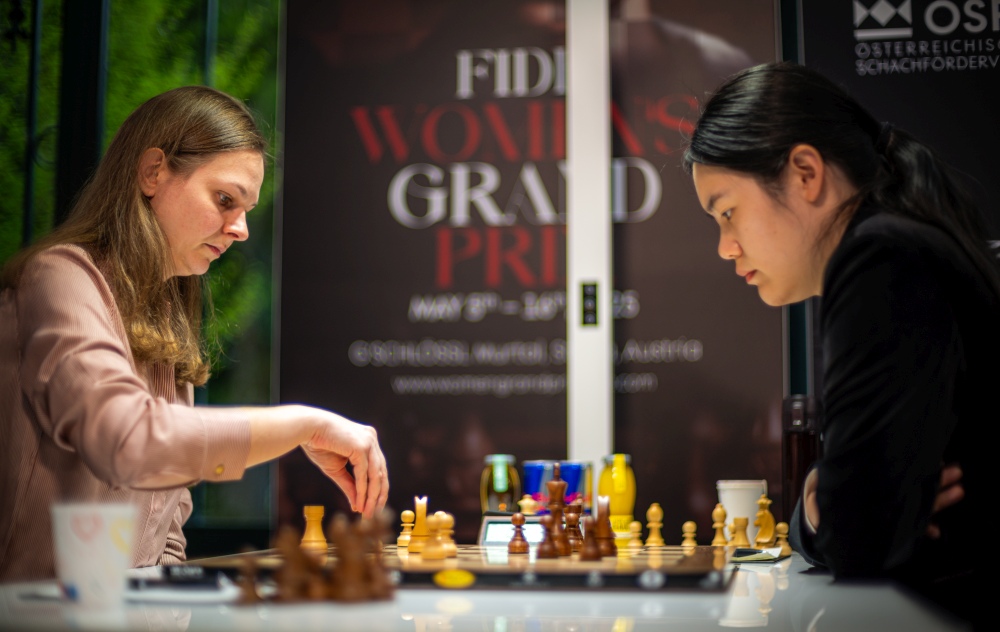
In the Ruy Lopez, Zhu surprised Anna with the move 5…Nxe4. In the post-game interview, Anna confessed that this wasn’t the line she prepared for. She spent more time on the clock than Zhu, but stayed composed.
But in the middlegame, it was Zhu who faltered, trading her a6 pawn to White’s c4-pawn. Black’s position looked very shaky at this point. However, Anna’s conversion was far from ideal. First, she prematurely traded the queens and then exchanged her knight for the light-squared bishop, significantly improving Black’s pawn structure.
The resulting endgame was slightly better for White, as she had clearer plans. Unfortunately for Zhu, she missed a critical moment of the game and one natural-looking, but passive move cost her dearly.
38…Rb6? 39.Ke3! Ke6 40.Kd2 Kd6 41.f5. Just after three moves played White is in full control. Anna is pressing ahead towards the centre and preparing her a- and b-pawns for an advance. Black’s position is hopeless.
Anna’s only problem was time. “I said to myself that, despite the time trouble, I had to play here,” Anna said after the game.
However, in time trouble her advantage completely evaporated, and the position was a draw. Despite the position being even, the two kept on playing. The final act of this drama came on move 84.
Zhu cracked here with 84…Na3??, allowing White to bring her king to d6, winning the second pawn, and bagging the game.
Nurgyul Salimova – Mariya Muzychuk, ½-½
In the Rossolimo Attack of the Sicilian, Muzychuk had surprised Salimova and gained an early advantage. As the game progressed, the Ukrainian kept building up pressure. By move 21, she had won a pawn on a2, but at the cost of transposing into a position with the opposite-colored bishops. Most likely, Mariya should have manoeuvred a bit more, waiting for a better chance.
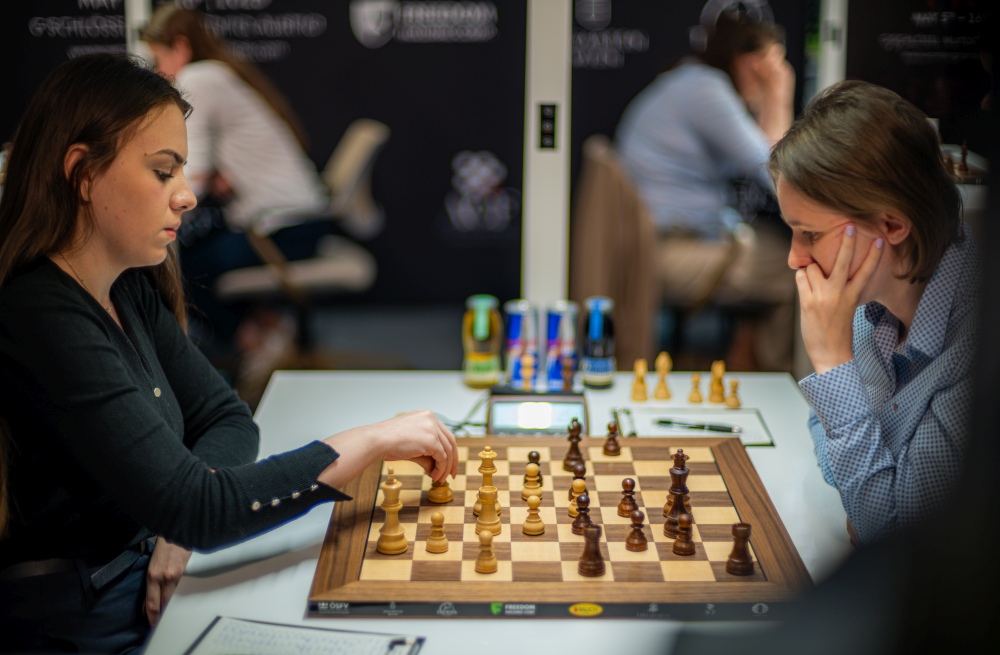
A pawn down, having to defend, Salimova now had another problem to deal with – time. She was increasingly falling behind on the clock.
To her credit, Salimova regrouped, coordinated her pieces, and defended successfully. Despite having the time advantage, Muzychuk had no better option than a threefold repetition. A draw was called on move 35.
Lela Javakhishvili – Vaishali Rameshbabu, 0-1
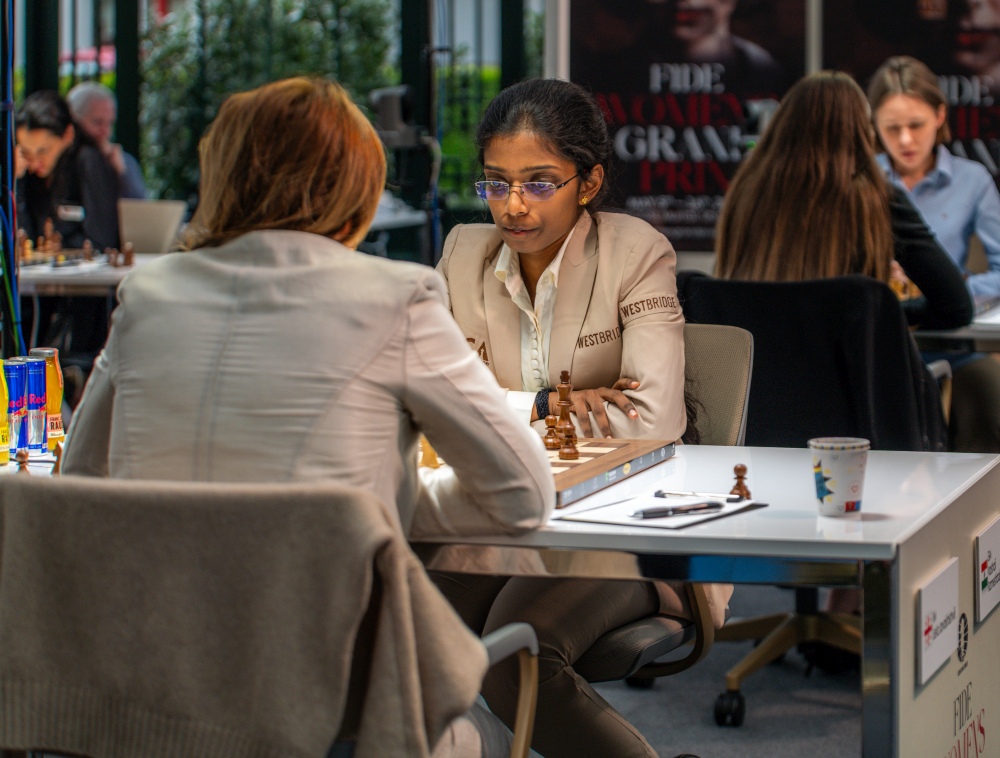
In the Reverse Grunfeld, Vaishali surprised the seasoned Georgian player by choosing a line she has not played before. The opponents followed the game Amin – Van Foreest (2022) up to move 14, when the Indian introduced a strong and logical novelty, recommended by engines – 14…Bf5.
White’s reaction was far from optimal, as just a few moves later she was pushed onto the back foot. However, Vaishali returned the favour soon.
With 23.e4, White tried to break free from the pressure. Vaishali erroneously took on e4 and opened space for simplifications. Instead, a better option was to play 23…Be6.
The position became equal again, but it was Lela who erred the last.
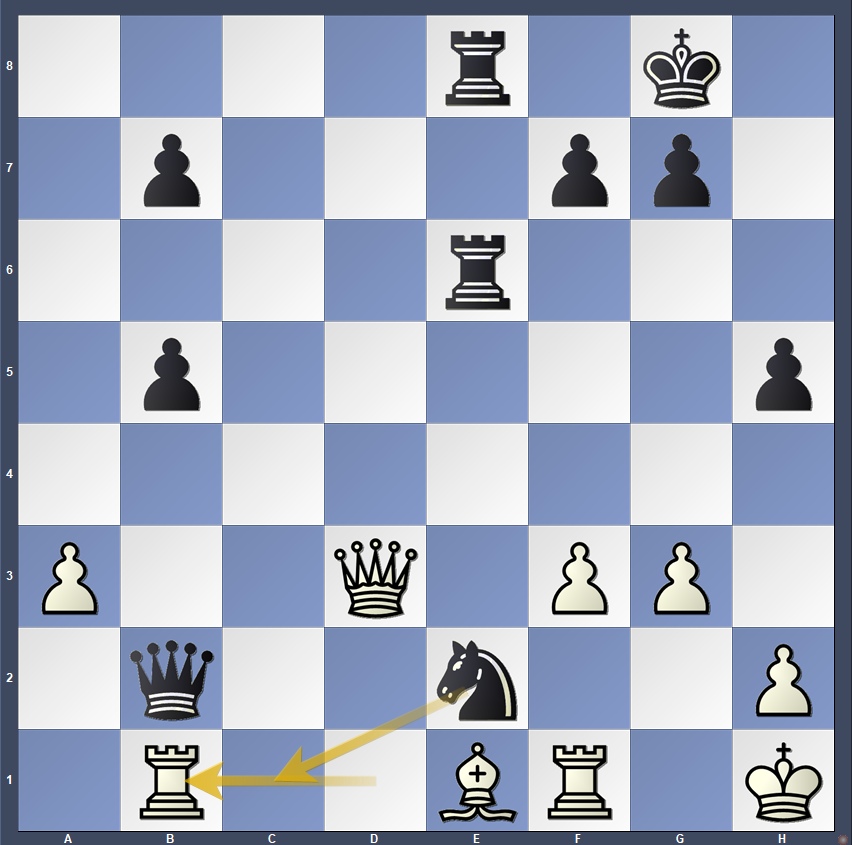
31.Rb1? missing a nice tactic 31…Nc1! After 32.Qf5 Qe2 33.Kg1 Re5 34.Qd7 Qc2 35.Bd2 Qxb1 36.Rxc1 Bb3 Black emerged an exchange up and in full control of the position. A few moves later, Javakhishvili resigned.
Round three starts on Thursday, May 8 at 3PM CET.
Round 3 pairings:
Vaishali Rameshbabu – Nana Dzagnidze
Mariya Muzychuk – Lela Javakhishvili
Zhu Jiner – Nurgyul Salimova
Olga Badelka – Anna Muzychuk
Alexandra Kosteniuk – Tan Zhongyi
Written by Milan Dinic
Photos: Przemysław Nikiel
About the tournament:
The tournament in Grosslobming is the final in a series of six tournaments in the 2024/2025 Women’s Grand Prix cycle.
Format: Ten players play a round-robin tournament (9 rounds). The time control is 90 minutes for the first 40 moves, followed by 30 minutes for the rest of the game, with an increment of 30 seconds per move starting from move 1.
Prize fund: €120,000 distributed among 10 participants based on placement (see Regulations)
For more information about the event, visit: womengrandprix.fide.com/
About the Women’s Grand Prix series
The FIDE Women’s Grand Prix (WGP) Series 2024-25 stands as a premier series in the international women’s chess calendar. In its seventh season, it serves as one of the crucial pathways to the Candidates.
The event comprises six tournaments, hosted in different countries: Georgia, Kazakhstan, Monaco, Cyprus, India and Austria.
The scoring system is conceptualised in a way that favours not just tournament victories, but consistency across events. Each player has a right to play in three out of the six events in the series.
The event is part of FIDE’s World Championship cycle, and the top two players in the WGP will qualify for the 2026 Candidates tournament. The winner of the Candidates will become the challenger to the current Women’s World Champion Ju Wenjun, who successfully defended her title against Tan Zhongyi in their 2025 match.



